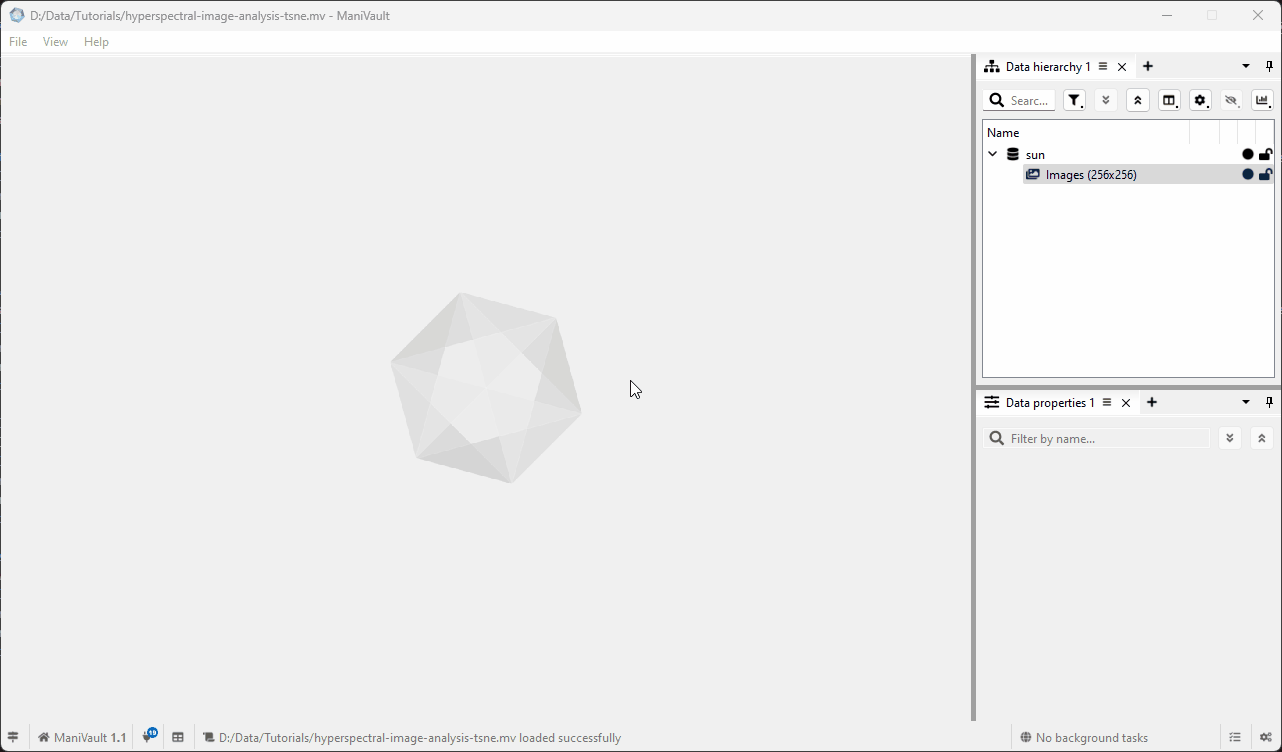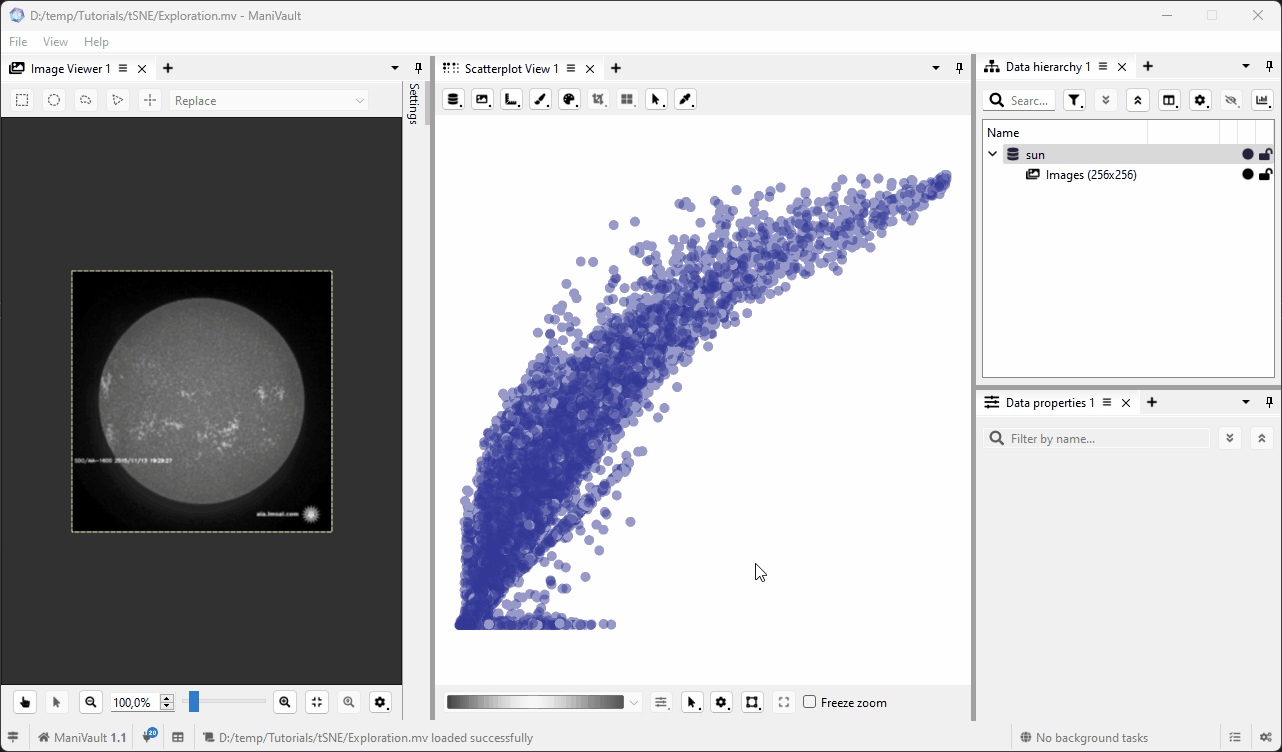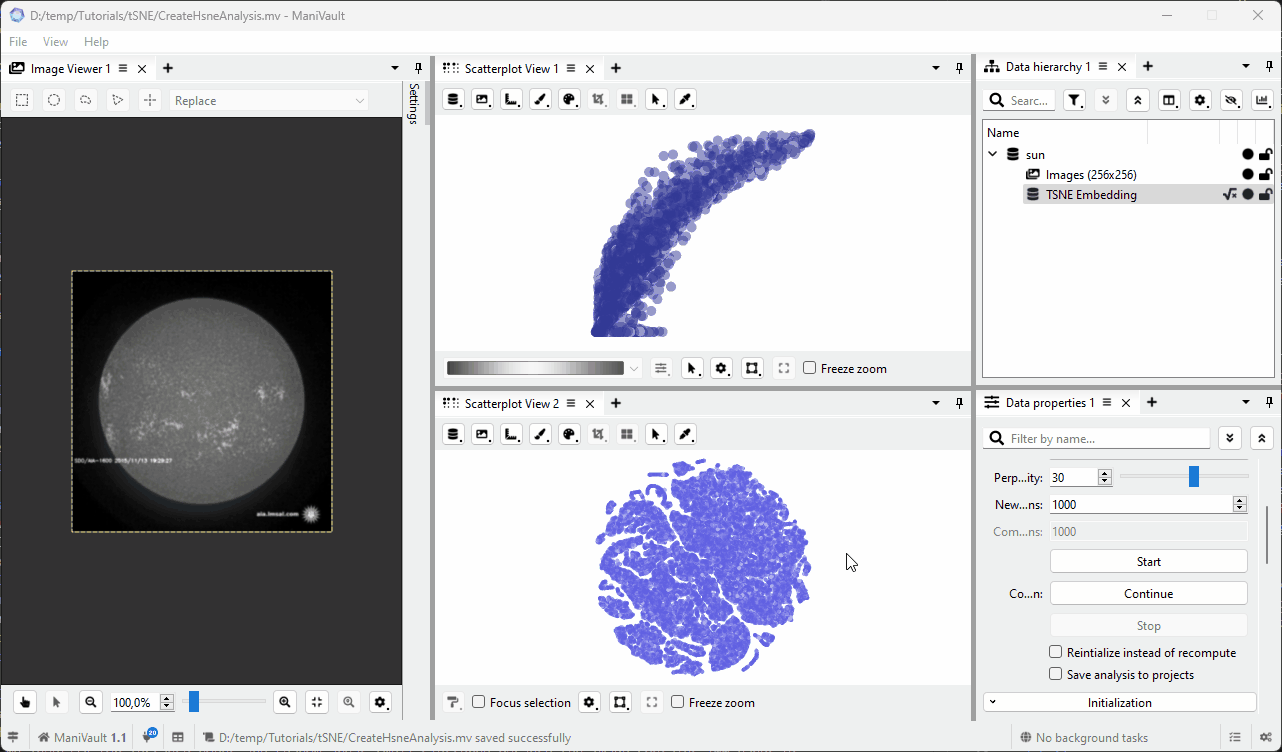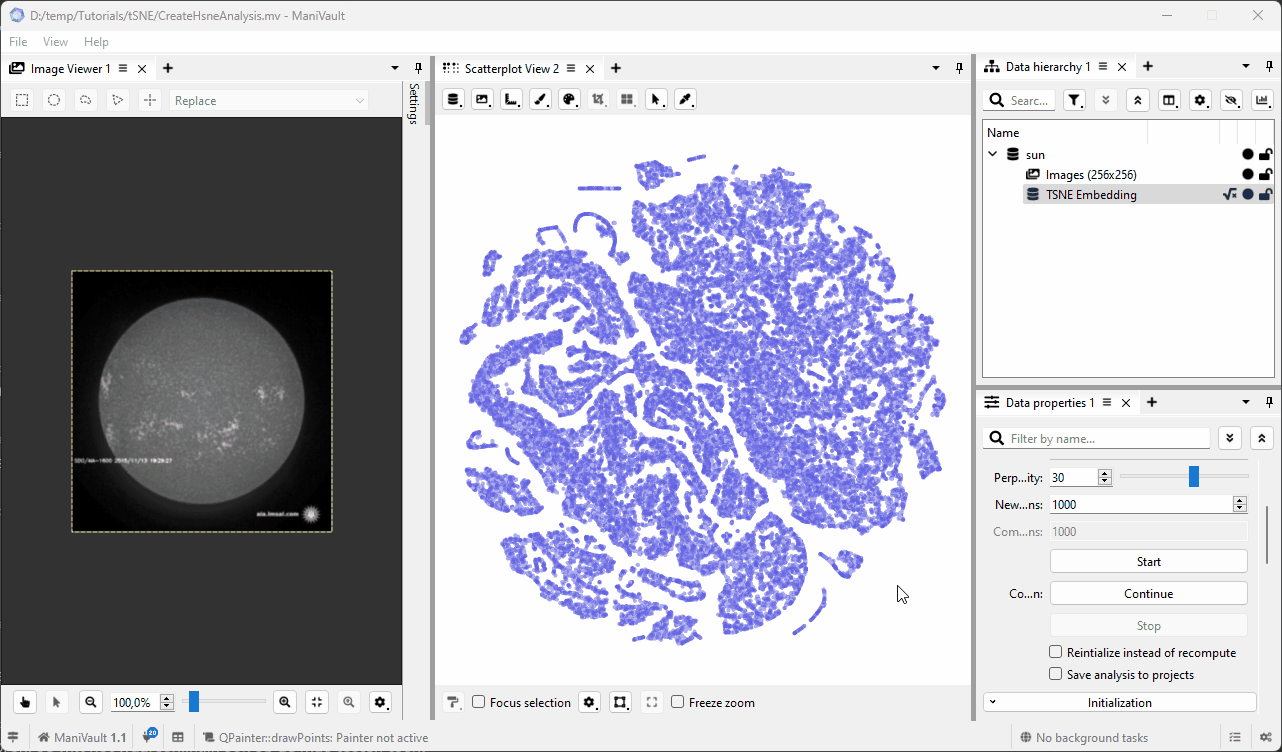Hyperspectral image analysis using tSNE dimensionality reduction
- ManiVault Studio 1.2 or higher
- |
- 25 Nov 2024
- |
- Thomas
- |
- 1 min read
This tutorial will guide you through the basic analysis of hyperspectral (high-dimensional) image data using tSNE dimensionality reduction. We will look at a hyperspectral image dataset of the sun and try to find some interesting patterns.
This tutorial requires a starter project, download it here if you need it
Explore the data
We start with a basic investigation of the hyper-spectral image data. We create two basic data views to start the visual analytics pipeline:
- An image viewer view to explore the images of the hyperspectral image dataset
- A scatterplot to view the raw data points
Note: the image viewer and the scatterplot viewer share a selection channel which means that selections made in the image viewer are reflected in the scatterplot and vice versa.
This video shows how to create the exploration views

Creating the analysis
Next, we create the tSNE analysis and add an additional scatterplot which will display the embedding. For now, we will use the standard tSNE settings as they are sufficient for this demonstration, more in-depth tutorials will follow.
This video shows how to create the tSNE analysis

Exploring the embedding
Now that the embedding has been computed, we can start to explore what the clusters of data points represent.
This video shows how to explore the embedding

Automatic clustering and re-coloring
Finaly, we automatically establish clusters with the mean-shift clustering analysis. The clusters dataset that it produces is then used in the image viewer to re-color the images with the cluster information.
This video shows how to cluster and recolor
